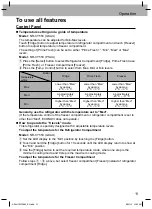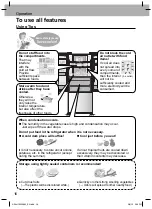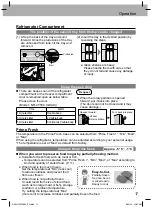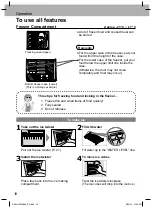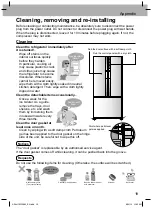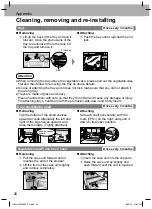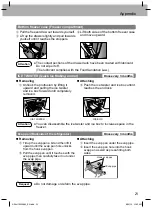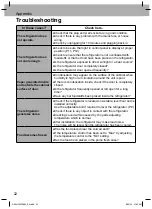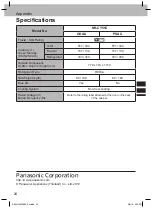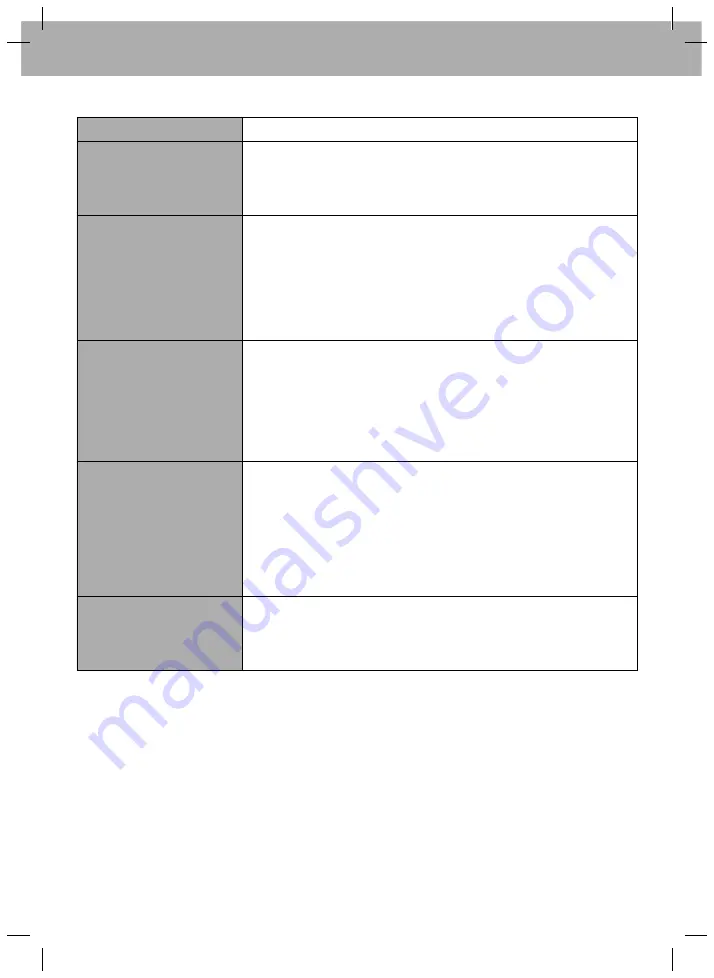
Introduction
Appendix
Troubleshooting
In these cases?
Check here.
The refrigerator does
not operate.
●
Check that the plug and wall socket are in good condition.
●
Check if there is any problem with the mains fuse or house
wiring.
●
Check by unplugging for 10 minutes and plugging back in.
The refrigerator does
not cool enough.
●
Check to be sure that light in control panel is display at proper
position (P.11, P12)
●
Check to ensure that the refrigerator is not overloaded with
foodstuffs or that hot food have been placed in the refrigerator.
●
Is the refrigerator exposed to direct sunlight or a heat source?
●
Is the refrigerator door completely closed?
●
Is the refrigerator door opened frequently?
Vapor generated inside
and outside the cabinet /
surface of door.
●
Condensation may appear on the surface of the cabinet when
humidity is high or air circulation around the unit is poor.
●
If there is condensation inside, check if the door is completely
closed.
●
Is the refrigerator frequently opened or left open for a long
time?
●
Have any hot foodstuffs been placed inside the refrigerator?
The refrigerator
generates noise.
●
Check if the refrigerator is located on a stable, level fl oor and is
installed correctly.
Use the adjustable bolt if required to level the refrigerator. (P.9)
●
Check if there is any object in contact with the refrigerator.
●
Cracking sound within caused by the parts adjusting
temperature which is normal.
●
After installation, the refrigerator may make loud noise.
The noise will be less when the refrigerator has been cooled.
Food becomes frozen
●
Was the food placed near the cold air duct?
●
If the temperature control has been set to “Max” try adjusting
the temperature control to the “Min” setting.
●
Has the food been placed in the prime fresh case?
22
ARAH1E200680_EN.indd 22
8/14/19 10:03 AM




